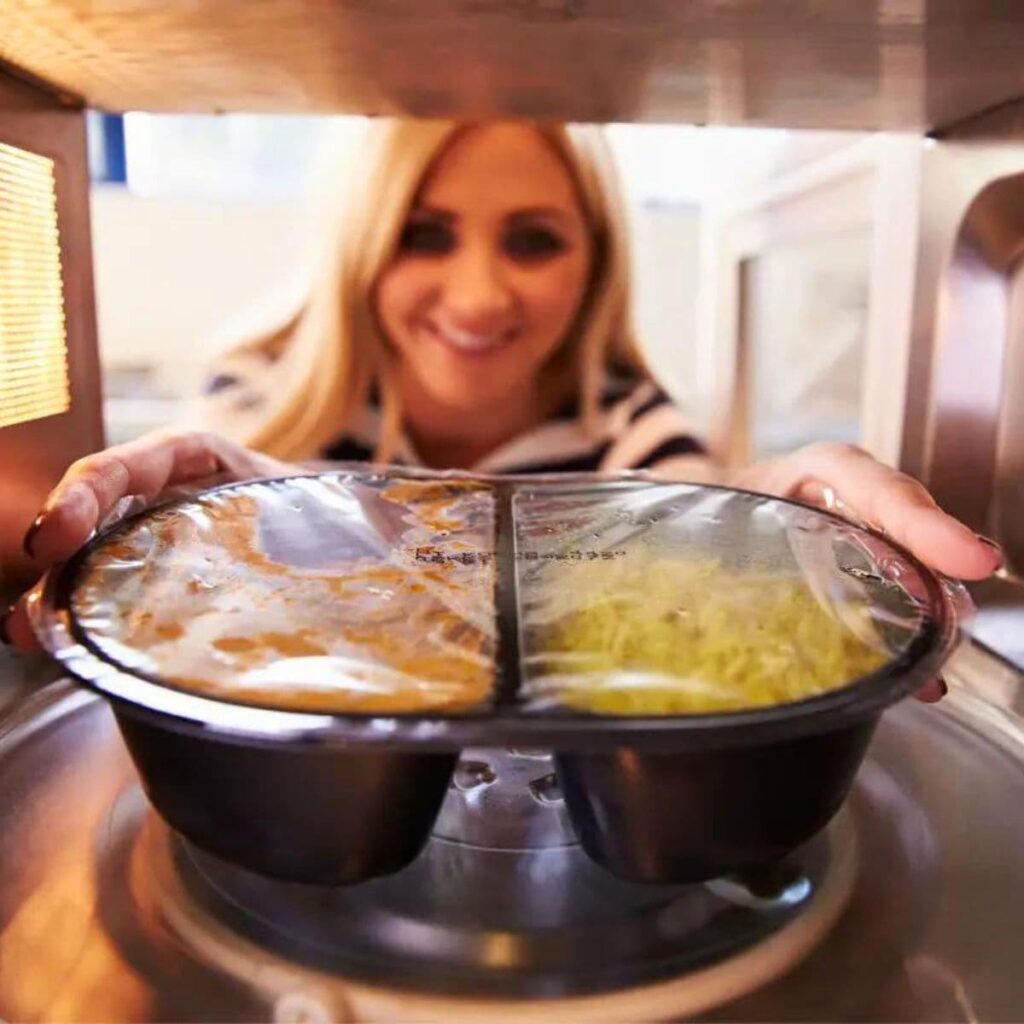If you have a newer model of microwave, you may have noticed a “sensor reheat” or “sensor cook” button on it. But, what is a sensor cooking microwave? How is it different from any other microwave?
Well, we’re here to answer that so you can decide if you want to explore the sensor mode on your microwave. I personally find it to be super convenient for heating up leftovers for my lunch, and I hope you’ll find a great use for it too!

How Does a Sensor Cook Microwave Oven Work?
A sensor cook microwave works by using sensors to monitor the food as it’s being heated. Based on measuring the amount of steam coming out of the food, your microwave can effectively determine the heating level and adjust accordingly.
It’s designed to bring your cooked or reheated food to the optimal safe temperature, and is intelligent enough to work with all sorts of foods and quantities thereof.
Whether you’re heating leftovers or making a baked potato, a sensor cook microwave will take the guesswork out of getting it right.
That said, I particularly find with leftovers that it will tend to “overheat” some areas. What I mean is that your microwave is going to heat until the overall moisture output is to a certain level.
If you’ve ever had a piece of lasagna that’s cold in the middle when it’s hot on the edges, a sensor microwave will continue until the middle is heated. That makes the outside become much hotter due to the extended cooking.
Try to break things up into smaller pieces, or pause the microwave periodically and give things a stir along the way. This should help mitigate some of the uneven heating that you’ll experience.
Make sure you rotate your dish as well, unless you have a turntable to do so for you. The microwave spin is very important for even cooking!
Can You Cover Your Food While Using Sensor Cook in a Microwave?
Yes, you can cover your food while using sensor cook in a microwave! Whether it’s a microwave lid or microwave-safe plastic wrap, it will still work with the sensor.
Once the covering is saturated with steam, it will begin to release, and the microwave will take the humidity sensing from there and adjust to complete the cooking cycle.
What’s the Difference Between a Sensor Microwave and a Regular Microwave?
When it comes to the difference between a sensor microwave and a regular microwave, there really isn’t much. The only differentiating element is the inclusion of the sensor to set a program for you. Both microwaves actually cook in the same way.
That said, a sensor cooking microwave does take a lot of guesswork out of programming a traditional microwave. It’s great for kids just learning to cook, busy folks trying to multitask, etc.
If you don’t know how long to cook a potato to get it cooked through, a sensor microwave will monitor and adjust for you. A regular microwave you’ll have to guess a time, set it to cook, check the potato, and possibly put it back in to achieve doneness.
Is Sensor Cooking the Same as Convection Cooking?
No, sensor cooking and convection cooking are different functions. Sensor cooking uses moisture data to adjust cooking time and power levels to achieve thorough heating. Convection cooking uses air circulation methods to decrease cooking time through more even heat patterns.
In short: if you were to cook a piece of chicken with convection cooking, it would be heated more quickly. However, you’d have to set the temperature and cook time on your own.
Sensor cooking would take longer to complete, but you’d only have to press the button and walk away. Your sensor microwave would do the rest.
Is a Sensor Cooking Microwave Worth It?
Whether a sensor cooking microwave is worth it depends on the value you’ll get out of it. On average, a sensor microwave costs between $50 – $100 more than a model without a sensor. This of course varies based on size and style of the specific microwave.
So, you’ll be paying more for your microwave to have that option. If you’re never going to use the sensor cook function, then it’s not worth the additional money.
However, where a sensor microwave really shines is in:
- Reheating food (leftovers)
- Cooking vegetables
- Heating pre-made frozen meals
It saves you the time in having to program the microwave, allowing you to do other things while your food veritably cooks itself.
See how easy it is to reheat corn on the cob in the microwave!
Sensor cooking is not good for:
- Very large foods (like a whole rotisserie chicken)
- Beverages
- Bread products
- Defrosting
If those are the primary things you plan to use your microwave for, know that the sensor cook option is likely not going to be worth it for you.
Conclusion
So, what is a sensor cooking microwave? It contains an intelligent sensor that communicates with the microwave adjustments to heat your food with no assistance from you. For about $100 more than a non-sensor unit, it’s a time-saving quality of life option that you may enjoy.
That said, sensor cooking isn’t ideal for every food and everyone, so use your judgment about your own circumstances before deciding if you’d like the option on your next microwave purchase.
I love reheating leftovers for lunch the next day, so it’s perfect for me!
Sensor microwaves also tend to fluctuate power draw significantly throughout their cook cycle. Learn more about how many amps a microwave uses to make sure you’re set up for one!
See how easy it is to reheat seafood boil in the microwave for the perfect meal!
- Guava Margarita: Easy Guavarita Drink Recipe! - April 22, 2024
- Air Fryer Avocado Egg Rolls (Cheesecake Factory Copycat) - April 21, 2024
- Strawberry Horchata Chai: Dutch Bros Copycat Recipe - April 20, 2024

